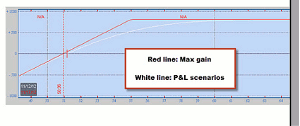Just because you buy its products, doesn't mean you should also buy a company's stock, says Laurie Itkin of BlueCollarInvestor and TheOptionsLady.
The KORS (KORS) initial public offering was the topic du jour among my girlfriends at a holiday party last December. The ladies I know who invest in stocks were trying to figure out how to get in on the IPO before the share price surged. It is human nature to want to invest in companies you like, especially when you are a consumer of their products! My favorite purse is a Michael Kors. Every time I carry it, its caramel-colored, buttery leather causes my friends and acquaintances to pepper me with compliments.
So why not invest in this fab company? Especially when my friends were planning to do so? First of all, just because I like to "buy and wear" a company's clothes and accessories doesn't mean I want to "buy and hold" its stock. I used to invest in only stocks but when I evolved into a covered call writer, my emotions took a back seat to logic. Successful covered call writers are logical and follow rules. Although writing out-of-the money calls can be an income supplement to buy-and-hold investing, typically the covered call investor isn't wed to a specific company for any serious length of time. We are generally looking for maximum return, with minimum risk, within a defined time period.
Some of my friends bought stock the day of and day after the IPO, but I held out. The Blue Collar Investor advises caution when attempting to trade a stock with little or no trading history.
In the face of a tepid stock market, KORS had a successful IPO. Its shares opened at $25, up 20% from its $20 offering price, and closed the first trading day at $24.20. (Contrast that with the Facebook IPO.) If you had gotten in at that time, you would have earned a great return. But had you bought the stock later, perhaps in late February or March, your investment would have stayed flat through mid-August. Unless you were writing covered calls, your money wouldn't have been working for you.
Earnings season is here and as the chart illustrates, in two of the three quarterly earnings events, the stock gapped up significantly. Will that happen again on November 13? I don't know, but what I do know is that I was delighted to see KORS show up as a fairly strong covered call candidate on the BCI premium report!
It was like waiting nine months for a beautiful purse I had been coveting to go on sale. On Oct 15 I submitted an order to buy 200 shares at $53.87 and sell 2 Nov 17 calls with a $55 strike price at a premium of $2.92 a share. Typically OTM calls wouldn't have such a high premium but since earnings are announced within the November options cycle, that partially explains the high price. KORS had been on the BCI Premium Service "running list" for ten weeks and had a fairly high and constant segment rank of B/B.
NEXT PAGE: Details of the Strategy
|pagebreak|KORS Accelerates After IPO
BCI advises against holding
positions during an earnings announcement because the implied volatility of the
stock can manifest in either an upward or downward move. I don't go to Vegas to
gamble and I don't play the lottery. BCI also advises against entering a
position during the month of an earnings announcement. This is a rule I
generally follow. I wouldn't normally enter into a new position when there is an
earnings announcement within that options expiration period; however, in this
case I made a limited exception because the earnings announcement was only a few
days before expiration. I entered into the position with a clear intent
to exit before the Nov 13 earnings announcement. I have a note on my calendar to
close the position (sell the stock and buy back the call) on Nov 12, which is a
few days before the Nov 17 expiration. I may close it earlier than that if the
stock stays above $55 and I have reached at least 80% of my maximum gain. I will
not be rolling the call into December before the earnings announcement, in line with the BCI rule. After the
announcement, I will then reevaluate the situation and consider selling a
December covered call (at the same or different strike price) only if the price
and chart activity remain favorable. I will also be checking the BCI premium
report to ensure that KORS is still on the running list.
Here is what the profit and loss chart tells me:
P&L Chart for KORS
My max gain is $810, which I will realize if the stock stays above $55 by expiration. The high premium gave me lots of downside protection and I break even if the stock goes down to as low as around $51. Since I want to be out of the position before the Nov 13 earnings announcement, I need to determine what my potential gain could be if I closed the position before then. The red line shows max gain if I stay in through expiration. The white line is what the gain would be on Nov 12 under various potential prices of the underlying stock.
I'm typically satisfied if I make 70-80% of maximum gain for any position so I think my plan to sell the stock and buy back the call before the earnings announcement will provide me a nice reward with little risk.
Laurie Itkin, who blogs at BlueCollarInvestor, can also be found on TheOptionsLady.




















